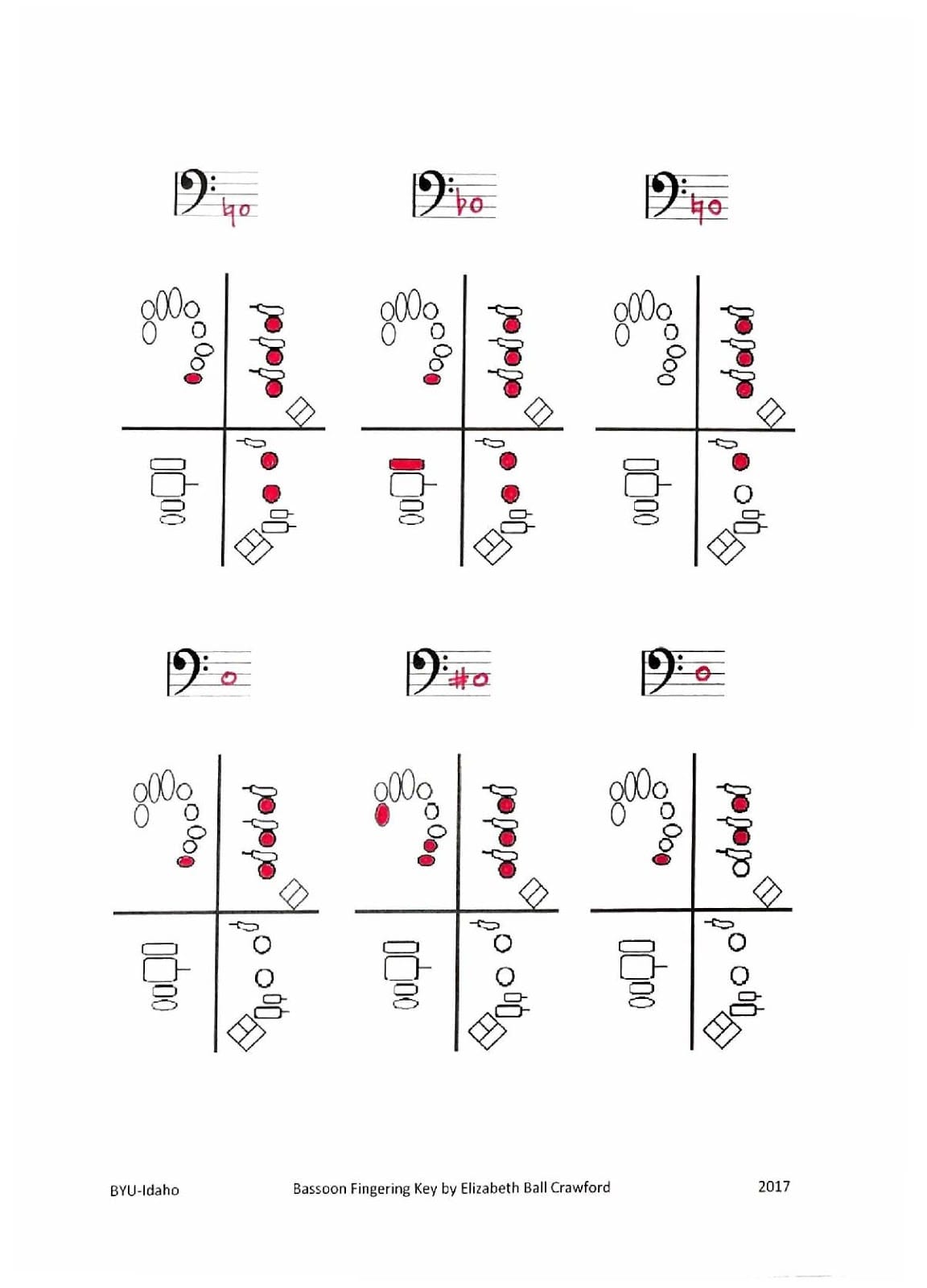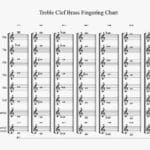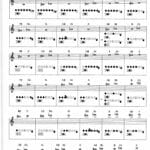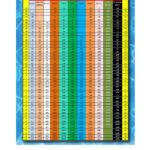Welcome to the world of the bassoon! This comprehensive guide will navigate you through the intricacies of bassoon fingering charts, from foundational principles for beginners to advanced techniques for seasoned professionals. Whether you are a novice or a seasoned bassoonist looking for detailed insights about anastasia manahan or want to learn more about the musical compositions of animelon, this guide is an invaluable resource.
Navigating the Bassoon’s Roadmap: Fingering Charts Explained
A bassoon fingering chart is your essential guide, mapping the keys to press for each note. It’s the foundation of your bassoon journey, whether you’re just beginning or refining your skills. Think of it as your personal GPS for navigating the instrument’s range.
Types of Fingering Charts: Decoding the Map
Just as there are different maps for different terrains, there are various types of bassoon fingering charts:
- Standard Fingering Charts: These are your go-to charts for everyday playing. They show the most common fingerings, forming the basis for most musical pieces.
- Alternate Fingering Charts: These charts offer alternative fingerings for the same note, useful for smoother transitions between notes, technical passages, or nuanced tonal changes.
- Trill Fingering Charts: Trills, those rapid alternations between two notes, have dedicated charts to simplify execution.
- Multiphonic Fingering Charts: For the adventurous, multiphonic charts unlock the potential to play multiple notes simultaneously, creating unique sonic textures.
- Harmonic Fingering Charts: These charts enable you to play specific overtones, adding another dimension to your tonal palette.
- Pianissimo Fingering Charts: Designed for playing softly, these fingerings often prioritize quietness over speed or ease of transition.
- Tremolo Fingering Charts: Tremolos, rapid repetitions of a single note, have specialized fingerings for ease and control.
- Microtone Fingering Charts: Delving into the nuanced world of microtones (intervals smaller than a half-step), these charts offer fingerings for the adventurous bassoonist.
Locating Your Charts: Resource Roundup
Finding the right bassoon fingering chart is like having a well-stocked map library. Here are some valuable resources:
- Weber State University: Their fingering chart resource not only offers basic fingerings but also emphasizes intonation and tone quality. You’ll find explanations of techniques like half-holing, flicking, and resonance key usage. (Download their 4-page PDF, approximately 1MB).
- David A. Wells: Explore a range of charts, from beginner to professional and even “extreme range,” using clear diagrams. (Downloadable PDFs, approximately 1MB, 2 pages)
- The Woodwind Fingering Guide: As a comprehensive online resource, this guide offers Heckel-system bassoon and contrabassoon fingerings organized by octave and trill. It also includes alternate, harmonic, pianissimo, tremolo, and multiphonic fingerings.
- Scott Blakley Bassoon Studios: “The Ultimate Bassoon Fingering Chart” caters to professionals yet is accessible to all levels, covering a vast array of fingerings.
- Building a Bassoonist (YouTube Channel): For visual learners, this channel provides video tutorials demonstrating proper fingerings and related techniques.
Elevating Your Technique: Advanced Fingerings
Once you’ve grasped the basics, advanced techniques can refine your playing, like adding detailed contour lines to your musical map.
Half-holing: Fine-tuning Your Pitch
Half-holing involves partially covering a tone hole to delicately adjust pitch and timbre, offering greater control over intonation and tonal color.
Flicking Keys: Seamless Transitions
Flicking keys, a rapid tapping motion, smoothes transitions between notes and creates distinct articulation effects. This technique adds flair and precision to your playing.
Resonance Key Usage: Unleashing the Bassoon’s Voice
The resonance key (also known as the half-hole or G# key) is a powerful tool. While primarily used to enhance the clarity and resonance of half-holed G, some experts believe it can also stabilize notes in the higher register and even assist with certain trills. Ongoing research suggests further applications, making it a topic worth exploring.
Decoding the Heckel System and Beyond
While the Heckel system is the most common, it’s important to recognize variations in other systems. Understanding these differences is crucial when switching instruments or playing with bassoonists using different systems. Although current research primarily focuses on the Heckel system, exploring these variations broadens your understanding of the instrument’s mechanics.
Unlocking the Bassoon’s Depths: Exploring the Full Range
The standard bassoon range typically spans from Bb1 (one octave below middle C) to E5. Extended techniques and specialized bassoons can push these boundaries, reaching up to Bb5 or even lower to A0 or, in rare cases, G0. Achieving these extreme notes often requires specific fingerings, specialized equipment, and advanced breath control.
Mastering the C’s: A Step-by-Step Guide
Let’s delve into playing C on the bassoon, a note that can be surprisingly nuanced.
Embouchure: The Foundation
A balanced embouchure is crucial. Gently hold the reed between your lips, ensuring a firm yet comfortable seal. This creates the ideal vibration for producing a clear tone.
Low C: Building the Base
For low C, you’ll likely press the keys for Bb, low B, low C, and low D simultaneously. This combination opens the necessary air passages for a resonant low C.
Middle C: Navigating the Mid-Range
Middle C fingering may vary based on your specific bassoon. Experiment with standard C fingerings in conjunction with the whisper key to find the optimal configuration.
High C: Reaching New Heights
High C requires the use of octave keys. Combine specific fingerings with the D, C, and A octave keys, employing a quick, clean “flicking” motion for seamless transitions.
Troubleshooting: Overcoming Obstacles
- Squeaks: These are often caused by leaky pads, a loose reed, or embouchure issues. Tightening the reed, checking for leaks, or adjusting your embouchure usually resolves the problem.
- Muffled Tones: Incorrect fingering, embouchure problems, or reed issues can lead to muffled tones. Double-checking your fingerings, adjusting your embouchure, or trying a different reed can often clear up the sound.
- Intonation Issues: If your notes sound out of tune, adjusting your embouchure, trying a different reed, or subtly altering finger pressure can improve intonation.
The Resonance Key: A Deeper Dive
The resonance key, primarily used for half-holed G, has a broader impact than many realize. It helps develop pinky finger strength, vital for bassoon dexterity, and allows for subtle tonal adjustments on other notes. Ongoing research suggests the resonance key has further applications yet to be fully understood, showcasing the complexities of bassoon acoustics.
Continuing the Exploration: Resources and Further Learning
Remember, learning the bassoon is an ongoing journey. Explore online forums, connect with experienced bassoonists, and consider taking lessons to deepen your understanding. With dedicated practice and exploration, you’ll continue to uncover the rich sonic possibilities of this unique instrument.
- Discover Long Black Pepper: Flavor & Health Benefits - April 25, 2025
- Shocking Twists: The Grownup Review: Unreliable Narration - April 25, 2025
- A Quiet Place Book vs Movie: A Deep Dive - April 25, 2025
















